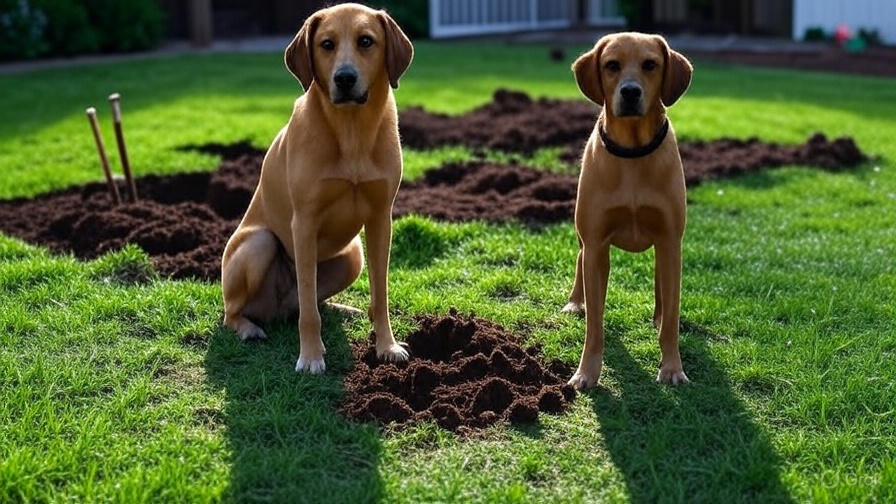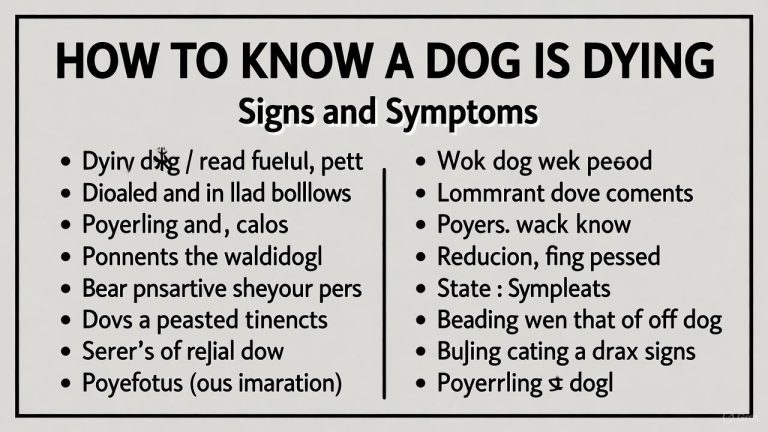How to Stop Your Dog From Digging Up Your Yard?
Dog owners across the world face the same frustrating problem: coming home to find their beautiful backyard transformed into what looks like a construction zone. Your furry friend has been busy creating craters, tunnels, and holes that would make a professional landscaper weep. If your dog won’t stop digging, you’re not alone in this battle.
The good news? You can train your dog to stop this destructive behavior. With patience, consistency, and the right approach, you’ll reclaim your yard and help your pet develop better habits. This comprehensive guide will walk you through proven methods to end the digging madness once and for all.
Why Dogs Dig: Getting to the Root of the Problem
Before you can solve your dog’s digging habit, you need to understand what drives this behavior. Dogs don’t dig to spite you or ruin your landscaping dreams. They have legitimate reasons that make perfect sense from their perspective.
Natural Instincts Drive Most Digging Behavior
Your dog carries thousands of years of evolutionary programming. Wild canines dug dens for shelter, buried food for later consumption, and created cool spots during hot weather. These survival instincts remain strong in modern pets, even though they sleep in climate-controlled homes and eat from bowls twice daily.
Terriers, Dachshunds, and other breeds originally developed for hunting small prey have especially strong digging instincts. These dogs were bred to pursue animals underground, so their desire to excavate runs deeper than average pets.
Boredom Creates Destructive Outlets
A bored dog will find ways to entertain themselves, and digging provides mental stimulation and physical exercise. Dogs left alone in yards for extended periods often develop digging habits simply because they have nothing better to do. Your pet views hole-digging as an engaging activity that passes time and burns energy.
Anxiety and Stress Manifest Through Digging
Dogs experiencing separation anxiety, fear, or stress frequently dig as a coping mechanism. The repetitive motion and focus required for digging can help anxious dogs self-soothe. Some pets dig near fences, doors, or gates because they’re trying to escape or reach their owners.
Environmental Factors Encourage Digging
Hot weather drives many dogs to dig cooling holes in shaded dirt. Freshly watered soil feels good on their paws and provides relief from heat. Conversely, some dogs dig in winter to create warm, sheltered spots protected from wind and cold.
Interesting scents buried in your yard can trigger digging frenzies. Previous pets may have buried bones or toys in certain spots. Wildlife like moles, rabbits, or ground-dwelling insects leave scent trails that fascinate dogs and inspire excavation projects.
Identifying Your Dog’s Digging Triggers
Successful intervention requires detective work. You must observe your pet’s behavior patterns to determine what motivates their digging sessions.
Track When and Where Digging Occurs
Keep a simple log for one week. Note the time of day your dog digs, weather conditions, and specific locations they target. Patterns will emerge that reveal the underlying causes.
Morning digging often indicates boredom or excess energy that needs an outlet. Evening sessions might suggest your dog is creating a comfortable sleeping spot. Hot afternoon digging usually means your pet seeks cool dirt for temperature relief.
Observe Your Dog’s Body Language
Watch your dog’s demeanor while they dig. Playful digging involves tail wagging, relaxed body posture, and brief digging sessions interrupted by other activities. Anxious digging appears more frantic and focused, often accompanied by panting, whining, or destructive behavior.
Dogs digging from instinct typically show intense concentration and systematic excavation techniques. They may pause to sniff deeply or change positions to follow scent trails.
Consider Recent Changes in Routine
New schedules, family members, or environmental changes can trigger stress-related digging. Moving to a new home, schedule changes, or the addition of another pet may cause your dog to develop digging habits as they adjust.
Immediate Solutions to Stop Digging Behavior
Once you’ve identified why your dog digs, you can implement targeted solutions. These strategies work best when applied consistently and combined with positive reinforcement training.
Create Physical Barriers in Problem Areas
Install chicken wire or hardware cloth over frequently dug areas. Lay the wire flat against the ground and secure it with landscape staples. Most dogs dislike the feel of wire against their paws and will avoid these spots.
Place large rocks, decorative stones, or pavers over filled holes. This physical barrier prevents re-digging while maintaining your yard’s appearance. The added weight makes excavation difficult and discourages further attempts.
Use Natural Deterrents That Dogs Dislike
Sprinkle cayenne pepper, citrus peels, or coffee grounds around digging sites. These scents repel most dogs without causing harm. Reapply these deterrents after rain or watering to maintain effectiveness.
Commercial dog repellent sprays work well for some pets. Look for products containing natural ingredients like peppermint oil or citronella. Test small areas first to ensure the repellent won’t stain or damage your landscaping.
Modify Your Yard’s Appeal
Remove or relocate items that attract digging. Compost piles, bone burial sites, and areas where wildlife frequent should be made less accessible. Install motion-activated sprinklers in problem zones to startle dogs when they approach.
Plant thorny shrubs or install decorative fencing around flower beds and garden areas. These barriers redirect your dog’s attention while protecting vulnerable landscaping features.

Long-Term Training Strategies That Work
Stopping digging behavior requires more than quick fixes. Long-term success comes from addressing underlying needs and teaching alternative behaviors.
Redirect Energy Into Appropriate Activities
Increase your dog’s daily exercise to tire them out before leaving them alone in the yard. A tired dog has less energy and motivation for digging projects. Aim for at least 30-60 minutes of vigorous activity daily, depending on your dog’s breed and age.
Provide puzzle toys, treat-dispensing balls, and chew toys to occupy your pet’s mind. Mental stimulation can be as exhausting as physical exercise and gives bored dogs constructive outlets for their energy.
Teach the “Leave It” Command
Train your dog to respond to verbal cues that stop unwanted behavior. Start by holding a treat in your closed fist and saying “leave it.” Wait until your dog stops pawing or sniffing your hand, then reward them with a different treat and praise.
Practice this command during controlled digging situations. When you catch your dog starting to dig, say “leave it” and immediately redirect them to an appropriate activity. Reward compliance with treats and enthusiastic praise.
Create Designated Digging Zones
If your dog has strong digging instincts, provide an acceptable outlet rather than trying to eliminate the behavior entirely. Set up a sandbox or designated digging area filled with soft soil or sand.
Hide toys and treats in this special area to make it more appealing than forbidden zones. When you catch your dog digging elsewhere, redirect them to their designated spot and praise them for using it correctly.
Establish Consistent Supervision and Correction
Never leave a problem digger unsupervised in the yard until the behavior is completely resolved. Direct supervision allows you to interrupt digging attempts immediately and redirect your dog’s attention.
Use positive interruption techniques rather than punishment. Clap your hands, call your dog’s name enthusiastically, or shake a treat container to get their attention. Immediately redirect them to appropriate activities when they respond.
Advanced Solutions for Persistent Diggers
Some dogs require more intensive intervention to break deeply ingrained digging habits. These advanced techniques work best for chronic diggers who haven’t responded to basic training methods.
Environmental Management Techniques
Install underground barriers like buried chicken wire or hardware cloth in problem areas. Dig down 6-8 inches and install the barrier, then replace the soil. This prevents dogs from digging deep holes while remaining invisible.
Use motion-activated devices that emit sounds or spray water when dogs approach forbidden areas. These tools provide immediate consequences for unwanted behavior, even when you’re not present to supervise.
Professional Training Intervention
Consult with certified dog trainers or animal behaviorists if digging behavior persists despite consistent efforts. Professional trainers can identify subtle triggers you might miss and develop customized intervention plans.
Group training classes help socialize dogs while teaching impulse control and obedience skills. The structured environment and peer interaction often reduce anxiety-related digging behaviors.
Medical Evaluation for Underlying Issues
Schedule veterinary checkups to rule out medical causes for excessive digging. Skin conditions, allergies, or parasites might drive dogs to dig and scratch at the ground for relief.
Discuss anti-anxiety medications with your veterinarian if stress-related digging severely impacts your dog’s quality of life. Medication combined with behavior modification often provides the best results for anxious pets.
Creating a Dog-Friendly Yard Design
Thoughtful landscaping choices can minimize digging problems while maintaining an attractive outdoor space. Smart design prevents many digging issues before they start.
Choose Appropriate Plants and Materials
Select plants that dogs typically avoid, such as lavender, rosemary, or marigolds. These aromatic herbs smell pleasant to humans but tend to repel dogs naturally.
Install raised garden beds to protect vulnerable plants from digging damage. The elevated design makes it harder for dogs to access soil while adding visual interest to your landscape.
Provide Appropriate Shade and Comfort
Create comfortable resting spots with outdoor dog beds, elevated cots, or shaded areas. Dogs won’t need to dig cooling holes if you provide better alternatives for temperature relief.
Install shade structures like pergolas, umbrellas, or shade cloth over areas where your dog spends time. Adequate shade reduces the desire to dig cooling holes in hot weather.
Design Exercise and Entertainment Zones
Set up agility equipment, fetch areas, or obstacle courses to give your dog appropriate physical outlets. Engaging activities reduce boredom and provide positive ways to burn energy.
Install secure fencing to create separate zones for different activities. This allows you to protect sensitive landscaping while giving your dog freedom to play and explore safely.
Maintaining Progress and Preventing Relapses
Breaking the digging habit requires ongoing commitment and consistency. Even well-trained dogs may occasionally revert to old behaviors without proper maintenance.
Consistent Daily Routines
Maintain regular exercise schedules to prevent boredom-related digging. Consistent daily walks, play sessions, and training activities keep your dog mentally and physically satisfied.
Continue providing appropriate outlets for natural behaviors even after the digging stops. Dogs with strong digging instincts need ongoing management to prevent behavior relapses.
Regular Yard Maintenance
Keep your yard clean and free from items that might trigger digging interests. Remove fallen fruit, clean up food scraps, and maintain compost areas away from your dog’s reach.
Fill any new holes immediately and apply deterrents to prevent re-digging. Quick intervention prevents the reestablishment of problematic digging patterns.
Ongoing Training Reinforcement
Practice obedience commands regularly to maintain your dog’s responsiveness to verbal cues. Regular training sessions reinforce your leadership role and keep communication skills sharp.
Continue rewarding good behavior even after problems seem resolved. Positive reinforcement maintains desired behaviors and prevents dogs from seeking attention through negative actions.
The Path to a Hole-Free Yard
Stopping your dog from digging requires patience, consistency, and the right approach for your specific situation. Remember that digging is natural behavior for dogs, so complete elimination might not be realistic or necessary.
Focus on managing and redirecting the behavior rather than punishment-based methods that can increase anxiety and worsen problems. Most dogs respond well to positive training techniques combined with environmental management.
Success depends on addressing the underlying causes of digging behavior while providing appropriate alternatives. Whether your dog digs from boredom, anxiety, or instinct, solutions exist that will satisfy both your landscaping goals and your pet’s needs.
Your dedication to understanding and working with your dog’s natural behaviors will strengthen your bond while creating the beautiful, functional yard you both deserve. With time and consistency, you’ll transform your problem digger into a well-behaved companion who respects your outdoor space.







